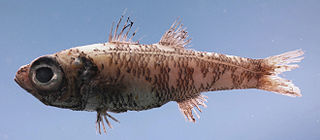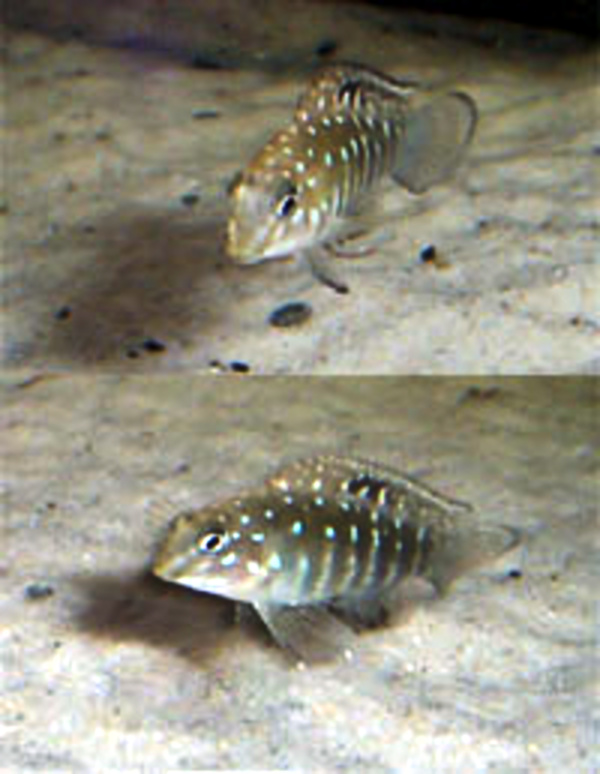 W
WApolemichthys xanthotis, common names yellow-ear angelfish and Red Sea angelfish, is a species of marine fish in the family Pomacanthidae.
 W
WThe Australian blacktip shark is a species of requiem shark, in the family Carcharhinidae, endemic to northern and eastern Australia. Favoring the upper and middle parts of the water column, it can be found from the intertidal zone to a depth of 50 m (160 ft). Appearance-wise this species is virtually identical to the common blacktip shark, from which it can be reliably distinguished only by its lower vertebra number and by genetic markers. Generally reaching 1.5–1.8 m (4.9–5.9 ft) in length, it is a fairly stout-bodied, bronze-colored shark with a long snout and black-tipped fins.
 W
WBarbus sperchiensis is a disputed species of cyprinid fish in the genus Barbus. It is a freshwater fish endemic to the Sperchios river complex, Central Greece.
 W
WThe bignose shark is a species of requiem shark, in the family Carcharhinidae. Distributed worldwide in tropical and subtropical waters, this migratory shark frequents deep waters around the edges of the continental shelf. It is typically found at depths of 90–430 m (300–1,410 ft), though at night it may move towards the surface or into shallower water. The bignose shark is plain-colored and grows to at least 2.7–2.8 m (8.9–9.2 ft) in length. It has a long, broad snout with prominent nasal skin flaps, and tall, triangular upper teeth. Its pectoral fins are long and almost straight, and there is a ridge on its back between the two dorsal fins.
 W
WThe brown shyshark or plain happy is a species of catshark, part of the family Scyliorhinidae. It is endemic to the shallow, coastal waters of South Africa from west of Cape Agulhas to KwaZulu-Natal. This benthic species is usually found over sandy or rocky bottoms. Measuring up to 73 cm (29 in) long, the brown shyshark is stoutly built, with a broad, flattened head and rounded snout. Unlike other shysharks, the brown shyshark has a plain brown color, though some individuals have faint "saddle" markings or light or dark spots. When threatened, this shark curls into a circle with its tail over its eyes, which is the origin of the name "shyshark". It feeds on bony fishes and lobsters, and is oviparous with females laying pairs of egg capsules. The International Union for Conservation of Nature (IUCN) has assessed this harmless species as Vulnerable. It is of no commercial or recreational interest, but its limited distribution makes its entire population vulnerable to increases in fishing pressure or habitat degradation.
 W
WThe Gila trout is a species of salmonid, related to the rainbow, native to the Southwest United States. Prior to 2006 the Gila trout was federally listed as endangered. In July 2006, after much work by the Game and Fish departments in New Mexico and Arizona, the US Forest Service and the US Fish and Wildlife Service, the Gila trout was down-listed to threatened, with a special provision called a "4d rule" that will allow limited sport fishing – for the first time in nearly half a century. This possibility is distinct: there may be no one alive today that has legally angled a pure Gila trout from its native waters. By the time the Gila trout was closed to fishing in the 1950s, its numbers and range were so depleted and so reduced this copper-colored trout simply wasn't very accessible to anglers. As of 2011 there is fishing in both states for this fish.
 W
WLiparis marmoratus, or the festive snailfish, is a marine ray-finned fish from the genus Liparis. It was first described by Schmidt in 1950.
 W
WThe painted electric ray or variegated electric ray is a poorly known species of numbfish, family Narcinidae, native to the western Atlantic Ocean from southeastern Venezuela to the mouth of the Amazon River in Brazil. It is common on soft substrates at a depth of 2–120 meters.
 W
WThe pencil cardinalfish is a species of deepwater cardinalfish found around the world at depths of 130 to 830 m. This fish can reach up to 20 cm (7.9 in) in TL.
 W
WThe Popoyote also known as the Chiapas killifish is a killifish from the family Profundulidae which is endemic to the valley of San Cristobal de las Casas in the Chiapas Highlands in Southern Mexico. It is highly endangered, because its natural habitat, which amounts to only a few square kilometers, is subject to contamination and urban sprawl from San Cristobal. It is currently being targeted by a civil society alliance for the protection of San Cristobal's wetlands.
 W
WBreviraja spinosa, commonly known as the spinose skate, is a species of ray in the family Rajidae.
 W
WThe spotfin goby cichlid is an African species of cichlid endemic to Lake Tanganyika where it is only known from the northern end of the lake. They live amongst pebbles in the surf-zone. This species can reach a length of 7 centimetres (2.8 in) TL. This species can also be found in the aquarium trade. Although presently considered the only species in the genus, another undescribed species is known from the Lukuga River.